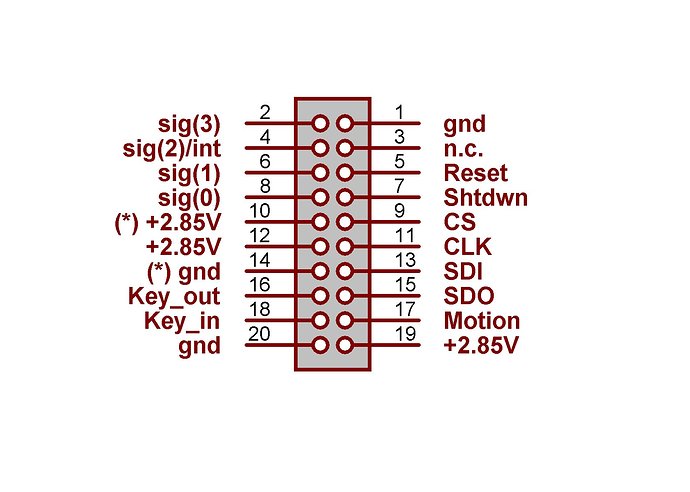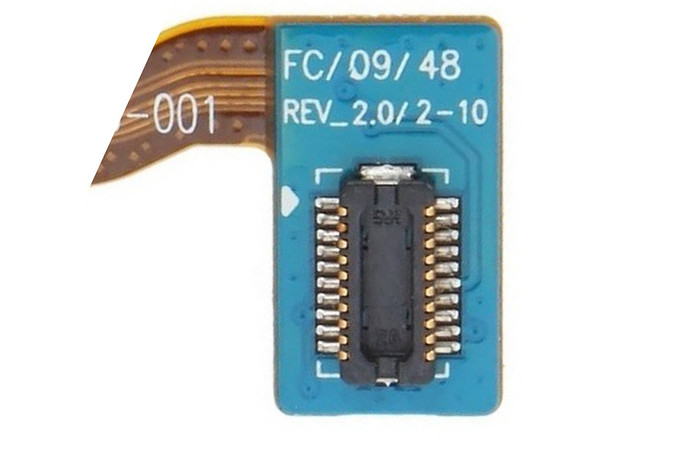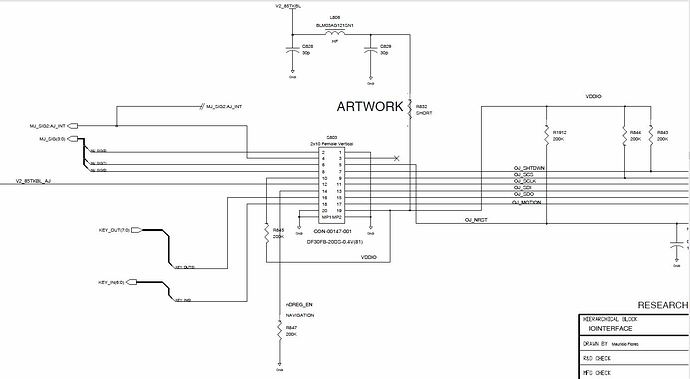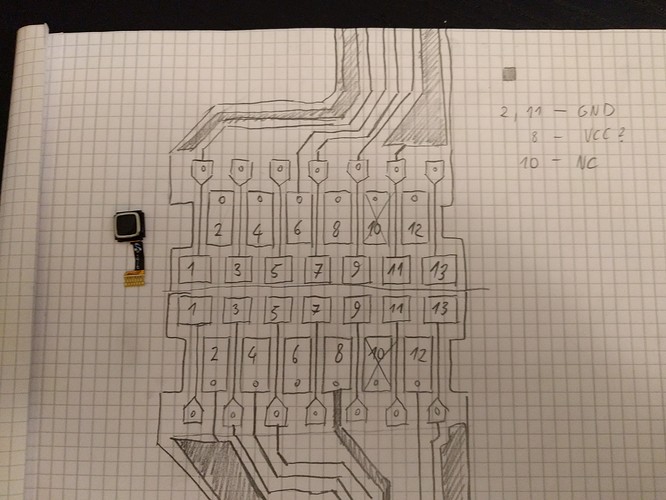You probably remember the trackpads that some smartphones had built into their home button? Most notably, the Desire Z and a number of Blackberries. Wouldn’t it be great to be able to build them into our keyboards in place of those joysticks and knobs? Or, you know, with them bing so small, you could even try to embed one in a key cap!
They can be bought for less than $2 as a replacement part, but the problem is figuring out how to connect them and read from them. The good news is someone already did this once:
That post is missing images, but I found them:
However the connector on that particular model is a bit tricky to get, so I decided to try and reverse-engineer the pins on another one:
What I have so far is:
- 2 and 11 are GND — you can tell by the fact they connect to ground fill, and they are connected internally.
- 8 is VCC — you can tell by how it uses a slightly thicker trace.
- 12 and 13 are the button switch — that was easy enough to find by comparing pins with the button pressed and with it released.
- 10 is not connected.
I still have seven pins to figure out, and they will most likely be CS, SCK, MISO, MOSI, RESET, SHUTDOWN, and INTERRUPT. Unfortunately, soldering wires to the pads directly turned out to be harder than I anticipated, and I had to make a simple breakout PCB instead:
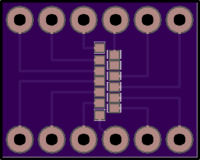
So now I’m waiting for the PCB to arrive from OSHPark — once it does, in about a month, I can continue.
